




Did you find this useful? Give us your feedback


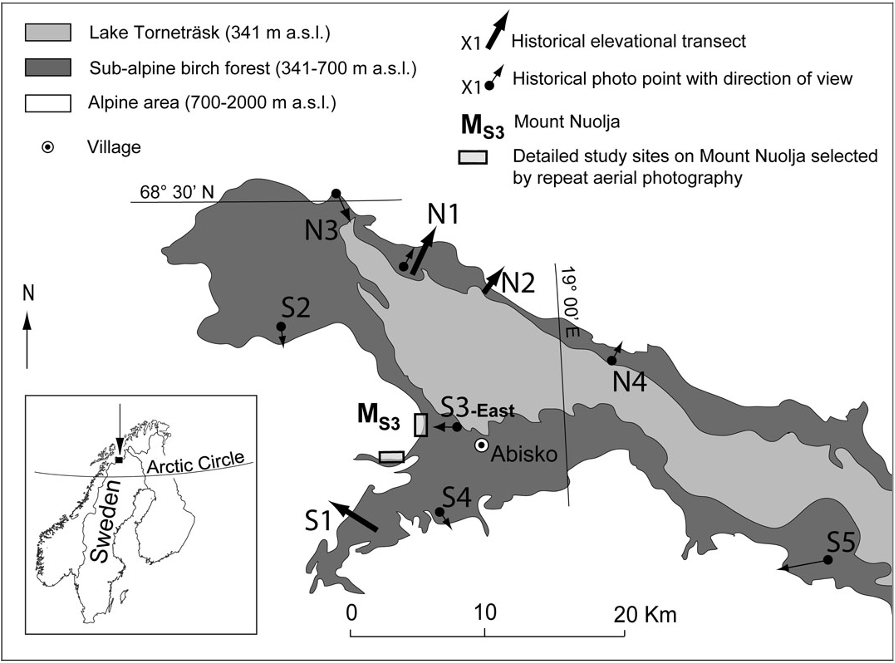
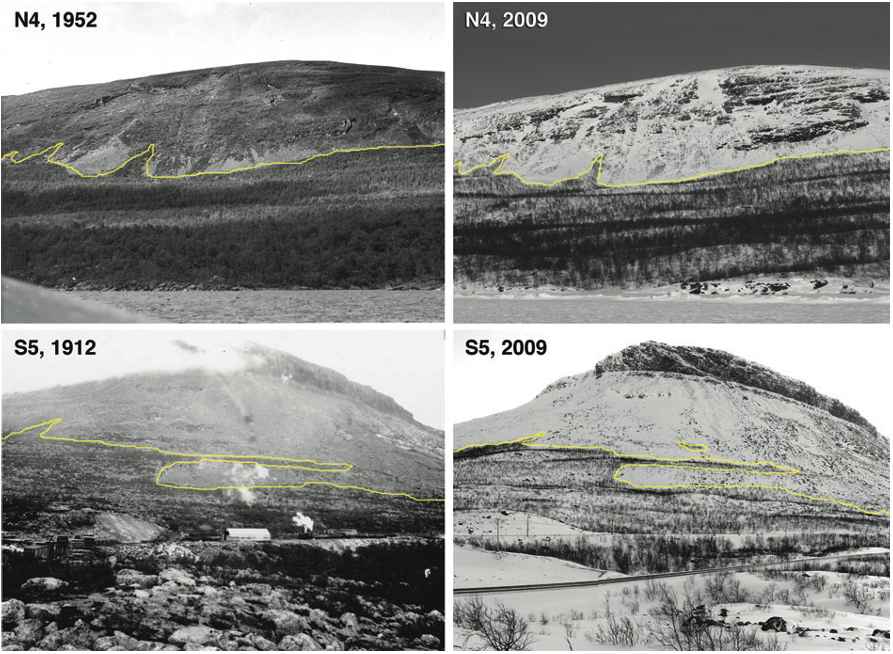
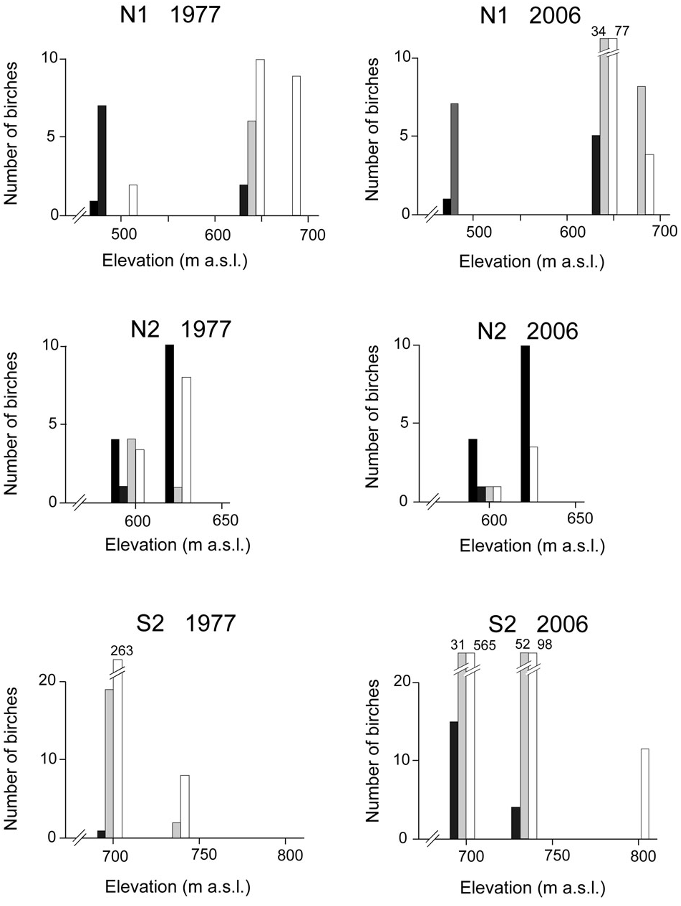
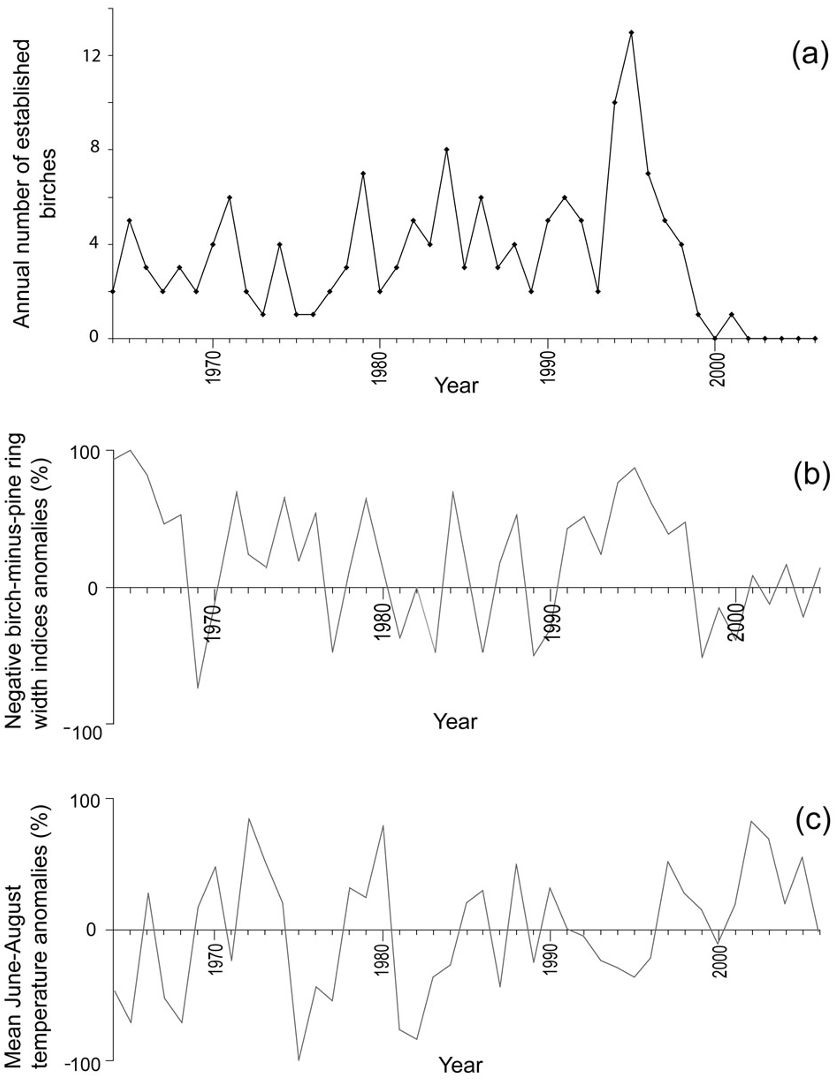
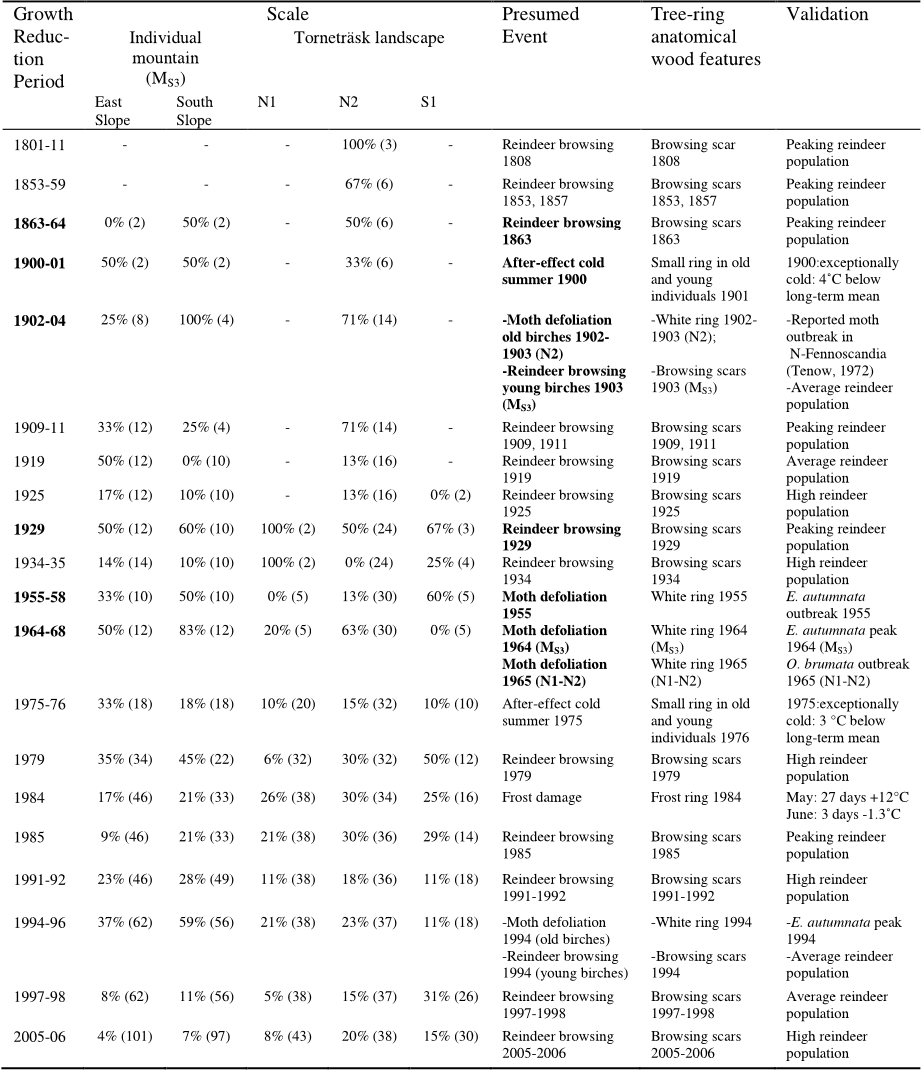
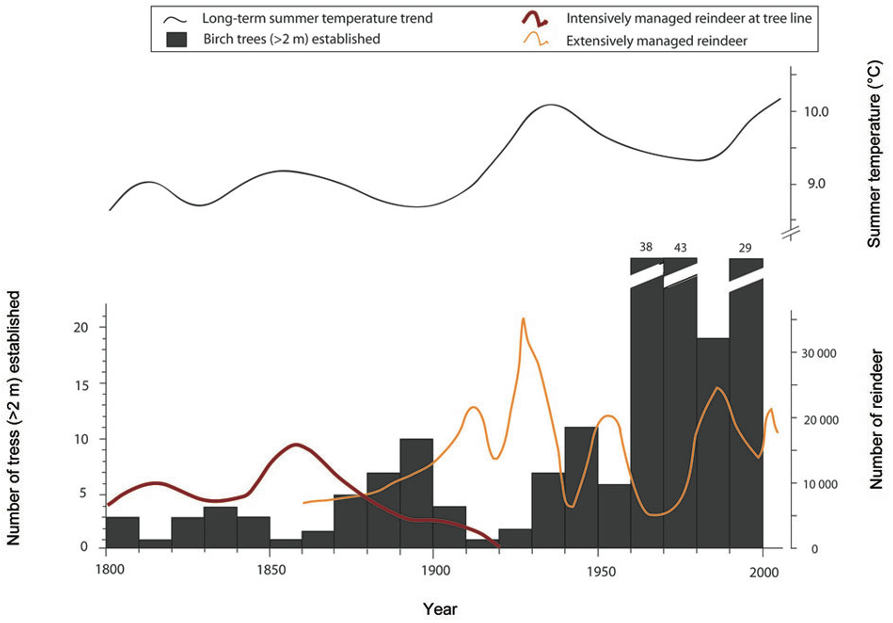
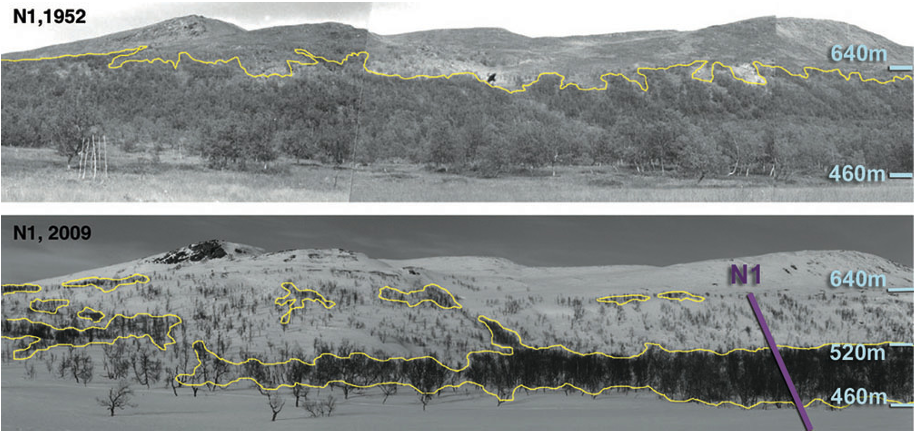





567 citations
337 citations
292 citations
147 citations
138 citations
161 citations
...Distinguishing human impact from natural factors is, however, one of the most difficult tasks in tree line research (Ellenberg, 1988; Hofgaard, 1997)....
[...]
...Changes in disturbance regimes (Holtmeier & Broll, 2010), land use (Hofgaard, 1997), plant–plant interactions (Van Bogaert et al., 2009) and herbivory (Hoogesteger & Karlsson, 1992; Speed et al., 2010; Van Bogaert et al., 2010) may easily override the effect of increasing mean annual temperatures....
[...]
157 citations
...However, in many circumpolar and high-elevational areas the position of the tree line has not changed (Masek, 2001; Holtmeier et al., 2003; Payette, 2007; Van Bogaert et al., 2007) or has even retreated (Vlassova, 2002; Dalen & Hofgaard, 2005; Kullman, 2005; Cherosov et al., 2010)....
[...]
146 citations
...Changes in disturbance regimes (Holtmeier & Broll, 2010), land use (Hofgaard, 1997), plant–plant interactions (Van Bogaert et al., 2009) and herbivory (Hoogesteger & Karlsson, 1992; Speed et al., 2010; Van Bogaert et al., 2010) may easily override the effect of increasing mean annual temperatures....
[...]
..., 2009) and herbivory (Hoogesteger & Karlsson, 1992; Speed et al., 2010; Van Bogaert et al., 2010) may easily override the effect of increasing mean annual temperatures....
[...]
138 citations
...Changes in disturbance regimes (Holtmeier & Broll, 2010), land use (Hofgaard, 1997), plant–plant interactions (Van Bogaert et al., 2009) and herbivory (Hoogesteger & Karlsson, 1992; Speed et al., 2010; Van Bogaert et al., 2010) may easily override the effect of increasing mean annual temperatures....
[...]
136 citations